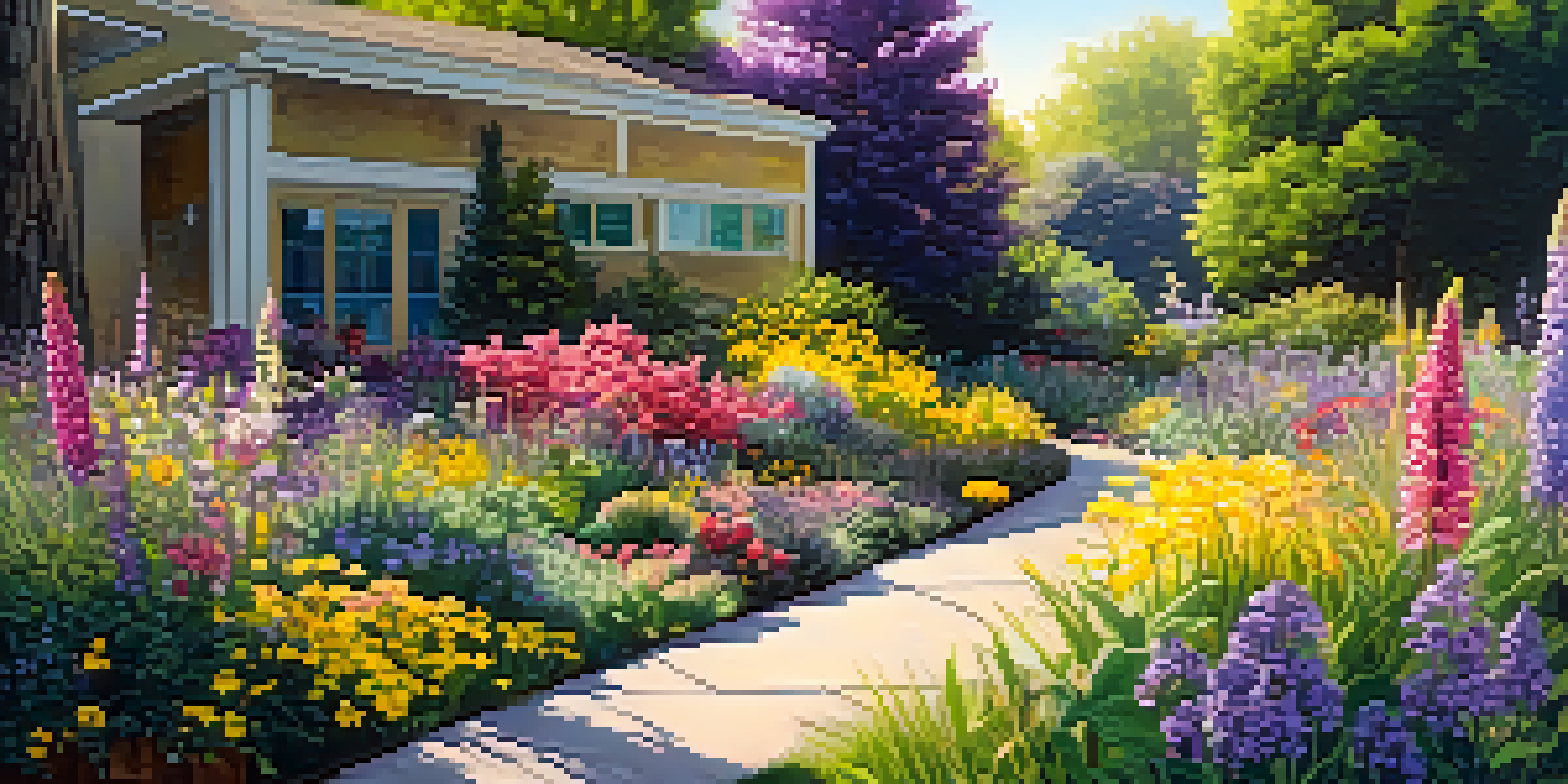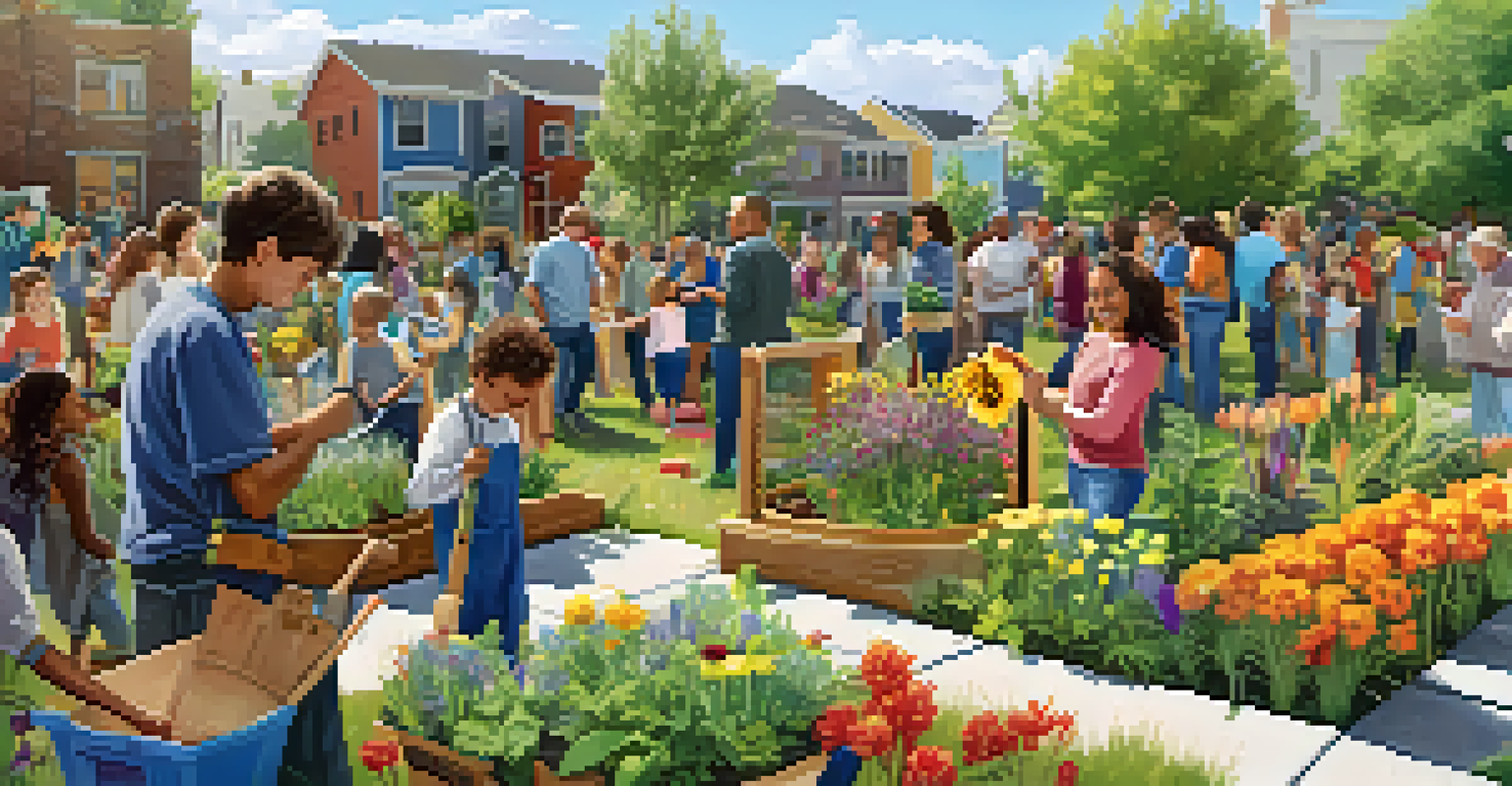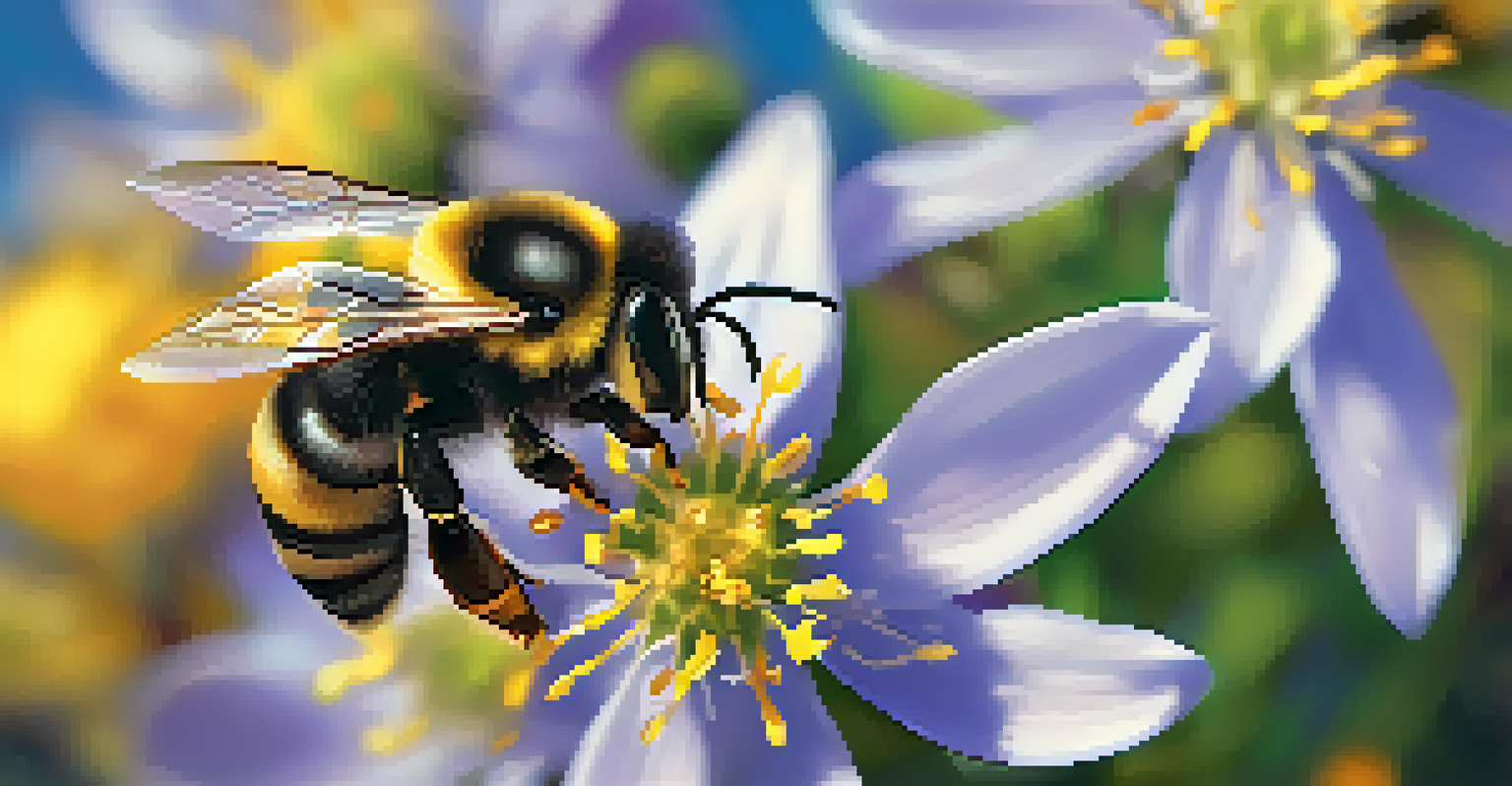The Importance of Pollinators in Urban Gardening Spaces

Understanding the Role of Pollinators in Ecosystems
Pollinators, such as bees, butterflies, and birds, play a crucial role in our ecosystems. They assist in the reproduction of flowering plants by transferring pollen, which helps produce fruits and seeds. Without these small but mighty creatures, many plants would struggle to reproduce, leading to a decline in biodiversity. In urban areas, where green spaces can be limited, the presence of pollinators is even more vital for maintaining ecological balance.
If we lose the bees, we lose a third of our food supply.
Imagine a world without the buzzing of bees or the fluttering of butterflies. Many of our favorite fruits and vegetables, like apples and tomatoes, rely on pollination to thrive. When pollinators visit flowers, they not only help plants reproduce but also contribute to the food chain that supports various wildlife. Thus, these tiny workers are essential for both our gardens and the larger ecosystem.
In urban gardening, where space is often constrained, attracting pollinators can significantly enhance the yield and health of plants. By understanding their importance, we can create environments that support and encourage these creatures to visit, leading to lush and productive gardens.
The Benefits of Pollinators in Urban Gardens
Urban gardens can greatly benefit from the presence of pollinators, as they increase plant productivity. When pollinators do their job, gardeners can enjoy larger yields of fruits, vegetables, and flowers. This not only provides fresh produce for families but also enhances food security in urban areas where access to fresh food may be limited.

Moreover, pollinators contribute to the aesthetic appeal of gardens. The vibrant colors and diversity of flowers attract these creatures, creating a lively and inviting atmosphere. A garden buzzing with pollinators can serve as a peaceful retreat for city dwellers, providing a much-needed escape from the hustle and bustle of urban life.
Pollinators Boost Urban Gardens
The presence of pollinators like bees and butterflies significantly enhances the productivity and health of urban gardens.
Additionally, having pollinators in urban gardens fosters a sense of community. As neighbors come together to create pollinator-friendly spaces, they share knowledge and resources, strengthening bonds and promoting environmental stewardship. This sense of collaboration can transform neighborhoods into greener, more vibrant places.
Creating Pollinator-Friendly Urban Gardens
Designing a pollinator-friendly garden starts with selecting the right plants. Native flowering plants are particularly effective at attracting local pollinators, as they have evolved together over time. Including a variety of colors, shapes, and sizes of flowers can provide different feeding options for various species of pollinators.
Nature is not a place to visit. It is home.
Another important aspect is the garden's layout. Creating clusters of the same plant species can help pollinators find food more easily. Leaving patches of bare soil or small areas with native grasses can also provide nesting sites for ground-nesting bees, further enhancing the garden's appeal to these essential creatures.
Beyond plants, it's crucial to limit the use of pesticides and chemicals that can harm pollinators. Opting for organic gardening methods not only protects pollinators but also ensures that the food produced is healthier for consumption. Simple changes, such as using natural pest control methods, can lead to a thriving, pollinator-friendly garden.
The Impact of Urbanization on Pollinators
Urbanization poses significant challenges to pollinator populations. As cities grow, natural habitats are often replaced with concrete structures, reducing the availability of food and nesting sites for these vital creatures. This loss of habitat can lead to declines in pollinator populations, which, in turn, affects our food systems and biodiversity.
Additionally, urban environments can be harsher for pollinators due to pollution and climate change. These factors can disrupt their natural behaviors, such as foraging and nesting. As temperatures rise and weather patterns change, pollinators may struggle to adapt, leading to further declines in their populations.
Community Action for Pollinator Health
Engaging communities in pollinator conservation through education and collaborative gardening efforts can create supportive environments for these essential creatures.
However, urban gardening initiatives can help mitigate these impacts. By creating green spaces filled with diverse and native plants, cities can provide refuge for pollinators amidst the concrete. Community efforts to support pollinator habitats can make a significant difference, encouraging biodiversity and resilience in urban ecosystems.
Engaging the Community in Pollinator Conservation
Community engagement is crucial for the conservation of pollinators in urban areas. By educating residents about the importance of pollinators, we can inspire collective action to create supportive environments. Workshops, community gardens, and local events can raise awareness and motivate individuals to take part in pollinator-friendly practices.
For example, organizing planting days where neighbors come together to plant native flowers can foster a sense of ownership and pride in the community. These events not only beautify the neighborhood but also provide essential resources for pollinators. When communities work together, they can create a network of habitats that supports these vital creatures.
Moreover, schools can play a significant role in engaging younger generations in pollinator conservation. Incorporating lessons about pollinators into science curricula can spark curiosity and encourage kids to participate in gardening projects. By instilling a sense of responsibility towards the environment, we can nurture future advocates for pollinator conservation.
The Role of Technology in Pollinator Awareness
In today's digital age, technology plays a significant role in raising awareness about pollinators. Social media platforms and websites dedicated to gardening can spread information quickly and effectively. Sharing success stories, tips, and resources encourages more people to create pollinator-friendly gardens, fostering a sense of community online.
Mobile applications that help identify local pollinator species can also enhance our understanding of these creatures. By enabling gardeners to recognize and learn about the pollinators in their area, we can build a deeper appreciation for their role in our ecosystems. This knowledge can drive more individuals to take action in support of these essential beings.
Urbanization Threatens Pollinators
As cities expand, the loss of natural habitats poses serious challenges to pollinator populations, impacting biodiversity and food systems.
Furthermore, citizen science projects that involve the public in monitoring pollinator populations can provide valuable data for researchers. By participating in these initiatives, individuals contribute to conservation efforts while gaining insight into the health of their local ecosystems. Technology, therefore, serves as a powerful tool for fostering a collaborative approach to pollinator conservation.
Future Directions for Urban Gardening and Pollinator Health
Looking ahead, the future of urban gardening and pollinator health depends on continued collaboration between communities, policymakers, and environmental organizations. Advocating for policies that protect pollinator habitats and promote sustainable gardening practices is essential. This collective effort can help ensure that urban environments remain hospitable for these vital creatures.
Innovative urban planning can also play a role in supporting pollinators. Integrating green roofs, vertical gardens, and pollinator corridors into city designs can create interconnected habitats that support biodiversity. These initiatives not only benefit pollinators but also improve air quality and enhance the urban landscape.

Ultimately, fostering a culture of sustainability and respect for nature is key to the future of urban gardening. By prioritizing pollinator health and creating resilient ecosystems, we can enjoy the beauty and bounty of our gardens while ensuring a thriving environment for generations to come.